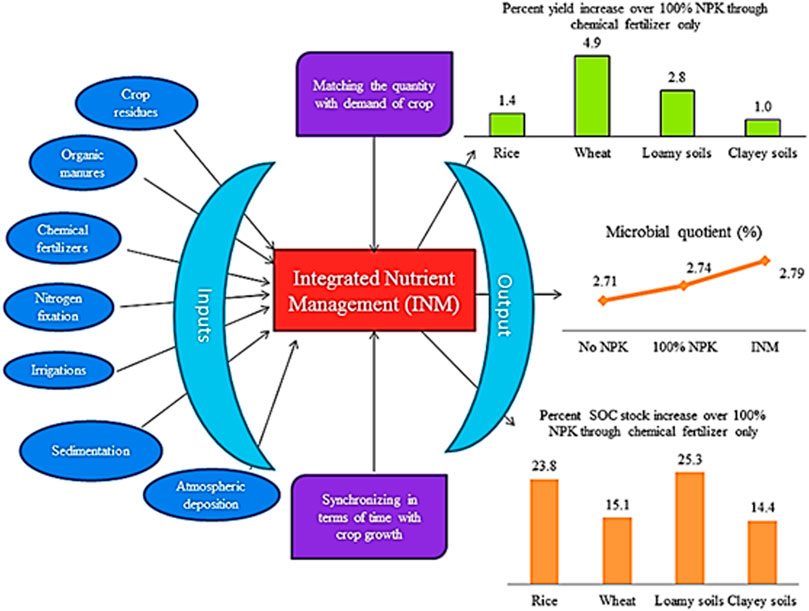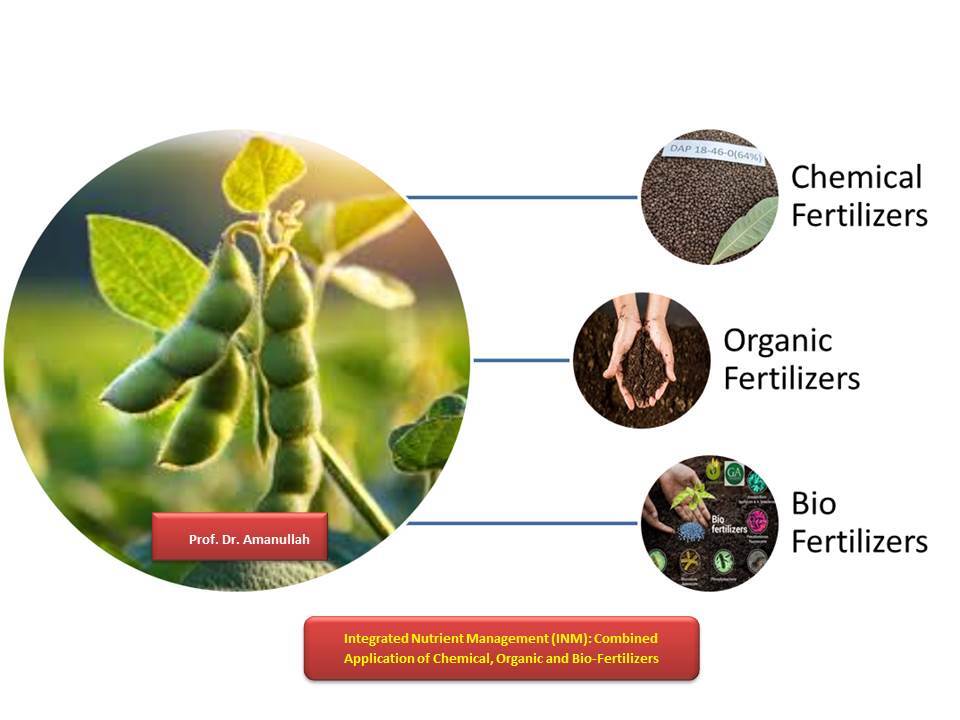Are you tired of seeing your crops struggle despite your best efforts? If you’re looking to enhance your agricultural yields, integrated nutrient management might be the solution you’ve been searching for.
Imagine harnessing the power of optimized nutrients to grow healthier, more productive plants. With the right strategy, you can transform your farming practices and achieve better results. This article will guide you through the essentials of integrated nutrient management, showing you how to boost your crop’s health and maximize your harvests.
Keep reading to discover how this approach can be the game-changer for your farming success.
Importance Of Nutrient Balance
Understanding the importance of nutrient balance in agriculture is crucial for maximizing crop yields. Picture your garden thriving with vibrant plants; what’s the secret? It’s all about giving your plants the right nutrients in the correct amounts. This balance is not just about adding more fertilizer but understanding what your crops truly need. Nutrient balance helps your plants grow stronger, resist diseases, and produce better harvests.
Why Nutrient Balance Matters
Imagine baking a cake without the right ingredients. You might end up with something that doesn’t taste right. The same goes for farming. Nutrient balance ensures your crops receive essential nutrients like nitrogen, phosphorus, and potassium in the right proportions. This prevents issues like nutrient deficiency or toxicity, both of which can harm your plants.
Understanding Plant Needs
Every plant has unique nutritional requirements. Have you ever noticed how some plants need more water than others? Similarly, some crops demand higher levels of certain nutrients. Knowing your plant’s specific needs helps you tailor your nutrient management plan, ensuring optimal growth.
Personal Experience: The Tomato Plant
A few years back, I planted tomatoes in my backyard. Despite regular watering and sunlight, they struggled. I realized I was overfeeding them nitrogen-rich fertilizer, leading to lush leaves but few tomatoes. Adjusting the nutrient balance made all the difference. Suddenly, the plants flourished and produced juicy tomatoes.
Practical Steps To Achieve Nutrient Balance
- Test Your Soil: Regular soil testing reveals nutrient levels, guiding your fertilization strategy.
- Use Crop Rotations: Rotate crops to naturally balance soil nutrients and reduce dependency on fertilizers.
- Choose the Right Fertilizer: Select fertilizers that match your soil’s needs and crop requirements.
Thought Provoking Questions
Have you ever wondered if your crops could produce more with less effort? What if tweaking your nutrient management was the key to better yields? Think about the changes you can make today to enhance your crop’s growth.
Balance is the cornerstone of successful farming. By maintaining nutrient balance, you can boost your yields and ensure your crops grow healthily. Your garden or farm can thrive with just a few thoughtful adjustments. Are you ready to see the difference nutrient balance can make?

Components Of Integrated Nutrient Management
Integrated Nutrient Management (INM) ensures sustainable agriculture with better yields. It combines various components to enhance soil fertility and plant growth. By using diverse nutrient sources, farmers can improve crop health. Let’s explore the key components of INM.
Organic Manures
Organic manures are natural fertilizers derived from plant and animal waste. They enrich the soil with essential nutrients. Manures like compost and green manure improve soil structure. They boost microbial activity and increase nutrient availability. Farmers often rely on cow dung and poultry litter.
Chemical Fertilizers
Chemical fertilizers provide specific nutrients like nitrogen, phosphorus, and potassium. They offer quick nutrient supply to growing plants. Proper use prevents nutrient imbalance and soil degradation. Farmers must follow recommended application rates. This ensures efficient nutrient use and minimal environmental impact.
Biofertilizers
Biofertilizers contain living microorganisms that promote plant growth. They fix atmospheric nitrogen or solubilize phosphorus. This enhances nutrient uptake by plants. Rhizobium and Azotobacter are popular biofertilizers. They reduce the need for synthetic fertilizers. These eco-friendly options support sustainable farming.
Crop Rotation
Crop rotation involves growing different crops in succession. It balances nutrient demand and replenishment in the soil. This practice prevents nutrient depletion and pest build-up. Legumes in rotation fix nitrogen, enriching the soil. Crop rotation improves soil fertility and crop yields.
Green Manure
Green manure involves growing plants and plowing them into the soil. These plants add organic matter and nutrients. They improve soil structure and prevent erosion. Green manure crops suppress weeds and enhance soil moisture. Popular choices include clover and legumes. They contribute to sustainable nutrient management.
Strategies For Implementation
Integrated Nutrient Management (INM) is key to boosting crop yields. Implementing effective strategies requires careful planning and execution. It involves combining organic and inorganic fertilizers. This balanced approach enhances soil fertility and plant health. Below are some strategic methods to put INM into practice.
Understanding Soil Needs
Start by analyzing soil nutrient levels. Soil tests reveal deficiencies and help tailor nutrient applications. This ensures crops get what they need for optimal growth.
Utilizing Organic Resources
Organic materials improve soil structure. Compost and manure enrich the soil naturally. They provide essential nutrients over time, supporting sustainable farming.
Precision Fertilizer Application
Apply fertilizers precisely to avoid wastage. Use the right amount at the right time. This technique maximizes nutrient uptake and boosts crop productivity.
Crop Rotation Benefits
Rotate crops to maintain soil health. Different crops use nutrients differently. Rotating helps balance nutrient levels, reducing the need for chemical fertilizers.
Integrating Cover Crops
Cover crops protect and enrich soil. They add organic matter and improve soil fertility. This practice contributes to a healthy ecosystem.
Monitoring And Evaluation
Regularly check soil and crop health. Use data to adjust nutrient management strategies. This ensures ongoing effectiveness and yields improvement.

Benefits Of Improved Harvests
Integrated Nutrient Management (INM) plays a vital role in agriculture. It combines organic and inorganic nutrients for balanced crop nutrition. This approach leads to improved harvests. Farmers benefit from healthier and more abundant yields. Let’s explore the specific benefits of improved harvests through INM.
Improved Soil Fertility
INM enhances soil fertility by maintaining nutrient balance. It replenishes essential nutrients, ensuring long-term soil health. Healthier soil supports robust plant growth.
Increased Crop Productivity
Balanced nutrients lead to higher crop productivity. Crops grow stronger and are more resistant to diseases. This results in increased yields and better quality produce.
Enhanced Crop Quality
Quality of crops improves with INM. Nutrient-rich soil produces healthier plants. This leads to better taste and nutritional value in crops.
Cost-effective Farming
INM reduces the need for excessive chemical fertilizers. It lowers input costs and increases profitability. Farmers achieve better yields with sustainable practices.
Environmental Sustainability
INM supports environmental sustainability. It reduces chemical runoff and soil degradation. This approach helps preserve natural resources for future generations.
Improved Farmer Livelihoods
Better yields lead to increased income for farmers. With higher productivity, farmers can support their families. INM contributes to improved livelihoods and community well-being.

Conclusion
Integrated Nutrient Management boosts crop health and yields. Farmers see better growth with balanced nutrients. This approach helps soil stay fertile. It reduces costs and increases sustainability. A consistent nutrient plan supports stronger plants. Farmers use less chemical fertilizers and achieve better results.
Healthier crops mean higher profits and less environmental impact. It’s a practical solution for sustainable farming. Implementing this strategy benefits both farmers and nature. Better yields start with smart nutrient management. Adopt these techniques for improved harvests and healthier soil.

